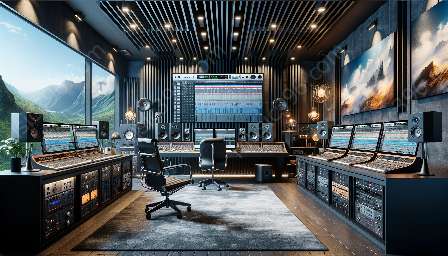Signal flow within a digital audio workstation (DAW) is the path that audio signals take from the input source to the output destination. Understanding signal flow is crucial for managing audio tracks effectively and achieving optimal sound quality in music production. In this comprehensive guide, we will explore the intricacies of signal flow within a DAW, its role in understanding audio tracks, and its significance in digital audio workstations.
Understanding Audio Tracks in DAW
Before delving into the specifics of signal flow, it's important to understand the concept of audio tracks within a DAW. Audio tracks are the foundation of a DAW project, where recorded or synthesized audio is stored and processed. Each audio track represents a separate channel through which audio signals flow, providing a canvas for music producers and engineers to manipulate and shape sound.
Within a typical DAW, there are several elements that form the foundation of signal flow:
- Input/Recording Devices: These devices capture audio signals from external sources, such as microphones, instruments, or synthesizers. The recorded audio is then sent to the DAW for processing.
- Virtual Instruments: DAWs often include a variety of virtual instruments that generate synthesized audio, adding a new layer to the signal flow within the software.
- Audio Processing Plugins: These tools allow for the manipulation and enhancement of audio signals, including effects such as reverb, EQ, compression, and more. They play a crucial role in shaping the overall sound of the audio tracks.
- Mixer and Buses: The mixer in a DAW serves as the central hub for signal routing, allowing users to control the levels, panning, and routing of audio tracks. Buses provide a way to group and route multiple tracks together for processing, creating submixes, or applying global effects.
- Output Channels: Once the audio signals have been processed and mixed, they are routed to the output channels, where they can be monitored and exported.
Signal Flow Process
The signal flow process within a DAW can be broken down into several stages, each of which plays a critical role in shaping the final audio output:
- Input Stage: At the beginning of the signal flow, audio signals are captured by input devices or virtual instruments. The audio is then sent to the respective audio tracks within the DAW.
- Processing Stage: Once the audio signals are within the DAW, they pass through various processing stages, including audio effects and virtual instrument settings. This stage allows for creative manipulation and enhancement of the audio signals.
- Mixing Stage: The mixer is a crucial component of signal flow, as it allows users to control the levels, panning, and routing of audio tracks. By adjusting the mixer settings, producers can achieve the desired balance and spatial positioning of audio elements in the mix.
- Output Stage: Finally, the processed audio signals are routed to the output channels for monitoring and export. This stage marks the culmination of the signal flow process, where the mixed audio is prepared for playback or further processing.
Role of DAWs in Audio Production
Digital audio workstations (DAWs) play a central role in audio production, offering a flexible and efficient environment for creating, recording, editing, and mixing music. Here's how DAWs contribute to the management of signal flow and audio tracks:
- Integrated Workflow: DAWs provide a seamless workflow by incorporating all the necessary tools and features for managing audio tracks and signal flow in a single interface. This integration streamlines the production process and enhances productivity.
- Signal Routing and Processing: DAWs offer extensive routing and processing capabilities, allowing users to route audio signals between tracks, apply effects, and manipulate the signal flow with precision.
- Automation and Control: DAWs enable automation of various parameters, such as volume, panning, and effects settings, offering precise control over the audio tracks' behavior and enhancing the creative possibilities within the signal flow.
- Collaboration and Sharing: DAWs facilitate collaborative workflows by providing tools for sharing projects, stems, and audio files, allowing musicians and producers to work together seamlessly regardless of their physical locations.
- High-Quality Sound Processing: DAWs are equipped with advanced audio processing algorithms and high-resolution audio engines, ensuring that the signal flow maintains the highest possible sound quality throughout the production process.
Conclusion
Understanding signal flow within a DAW is essential for any music producer or audio engineer. It forms the backbone of audio track management, shaping the way audio signals are captured, processed, and mixed within a digital environment. By comprehending the intricacies of signal flow and harnessing the capabilities of digital audio workstations, professionals and enthusiasts alike can take their music production to new heights, achieving professional-level sound and creativity.









